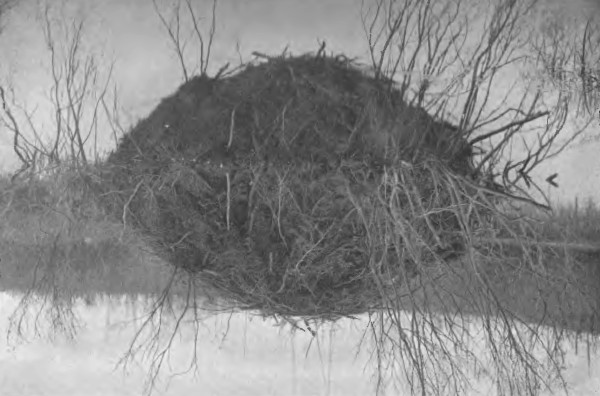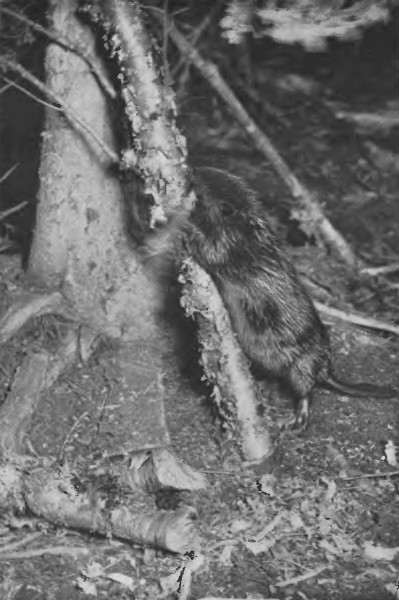 |
|||
| Kellscraft
Studio Home Page |
Wallpaper
Images for your Computer |
Nekrassoff Informational Pages |
Web
Text-ures© Free Books on-line |
|
THE ROMANCE OF THE BEAVER
THE ROMANCE OF THE BEAVER Being the History of the Beaver in the Western Hemisphere. By
A. RADCLYFFE DUGMORE ILLUSTRATED
WITH PHOTOGRAPHS FROM
PHILADELPHIA: 1914
CONTENTS
DEDICATED
THE object of this little book is two-fold: first, as people of nearly all classes and ages appear to be interested in the life and habits of the beaver, to provide a book on the subject free from exaggeration, and not too technical; secondly, to call attention to the question of protecting the most interesting animal to-day extant. We are apt to drift along so busied by our own affairs that the future is too often forgotten, as indeed is the immediate present, except in so far as it intimately affects us and our daily lives. Occasionally we wake up — some of us at least — and realise with a shock that something is slipping from our grasp, that the world is in imminent danger of losing some particular and interesting form of life, for once a species is gone no power of man will ever recall it. If our awakening is not too late, and our energies are sufficient, we make a great cry that is heard far and near and the species is perhaps saved. If our cry is only half hearted, the disappearance of the bird or animal is arrested, and we are satisfied; but apathy follows only too often, and then more than likely the destruction continues, and at our second awakening we are probably too late. We owe a great deal to those who follow us, for we are the stewards into whose keeping the world is entrusted; we populate the world with our children who have the right to ask an account of our stewardship, and their children, and their children’s children after them. As we build museums and libraries to store away and preserve to the best of our ability those things which though perishable, we believe to be of interest, so must we do all in our power to protect the birds and animals that are practically imperishable except through man’s too frequent destructive agency. Some animals are probably doomed to extermination, as wild creatures at any rate, and perhaps also as captives; among these are the lions, leopards, rhinoceroses and others, whose methods of use are not conducive to human advancement and comfort. They can only be preserved as mounted specimens and in photographs; such pictures whether single or cinematographs will be of untold interest to those who follow us and we should feel the obligation of not only securing really good negatives but of having those we have got properly cared for. Too often have I urged this and yet how little is being done! With the beaver it is not so much a question of securing photographs, for the beaver do not lend themselves to pictorial efforts. It is a question of securing for him proper protection. What Colonel Roosevelt, Dr. W. T. Hornaday (of the New York Zoological Society), the Audubon Societies, the Museum of Natural History of New York and other organisations and individuals have done for birds, and some animals, should be done for the beaver. The perpetuation of the species could be carried on with so little trouble, and the results would repay the efforts ten-thousandfold. If this little book does anything to call attention to the question of adequate protection either in the United States, Canada, Newfoundland, and else where, the many years of hard work will be more than amply repaid. In treating the subject I have avoided all mention of methods of trapping as it is intended as a constructive and not a destructive work. Someone will come after me who will no doubt treat the subject of beaver life far better and with greater thoroughness. That work will, I trust, be received with gratitude. In the mean time those who are interested in the subject will perhaps experience some slight pleasure from this effort to call attention to the beaver, his work, and its far-reaching effects. Among those to whom I am indebted for information are many who have passed to the land of shadows, but have left behind them the results of their observations. I therefore offer my thanks, both to the living and the dead — most conspicuous among them being Lewis H. Morgan, for “The American Beaver and His Works” (published in 1868 by J. B. Lippincott & Co.), Horace T. Martin, F.Z.S., &c., for “Castorologia, or the History and Traditions of the Canadian Beaver” (1892), Ernest Thompson Seton for “Life Histories of Northern Animals,” and Enos A. Mills for “In Beaver World” (1913), and to the Jesuit fathers. For the photographs which illustrate this volume I can but say that I have done my best, and have never spared myself in my efforts to get the most satisfactory results. Some of the photographs of the animals themselves have been slightly retouched. It is my first offence in this direction, and has only been done because after careful consideration it seemed so very necessary. The reader will never realise the amount of labour that has been devoted to securing the pictures given, for they are illustrations rather than pictures. Let him therefore pass over their defects with a kindly consideration and not be too severe if in the text he finds statements which do not agree with his own ideas and experiences.
A. RADCLYFFE DUGMORE. |

